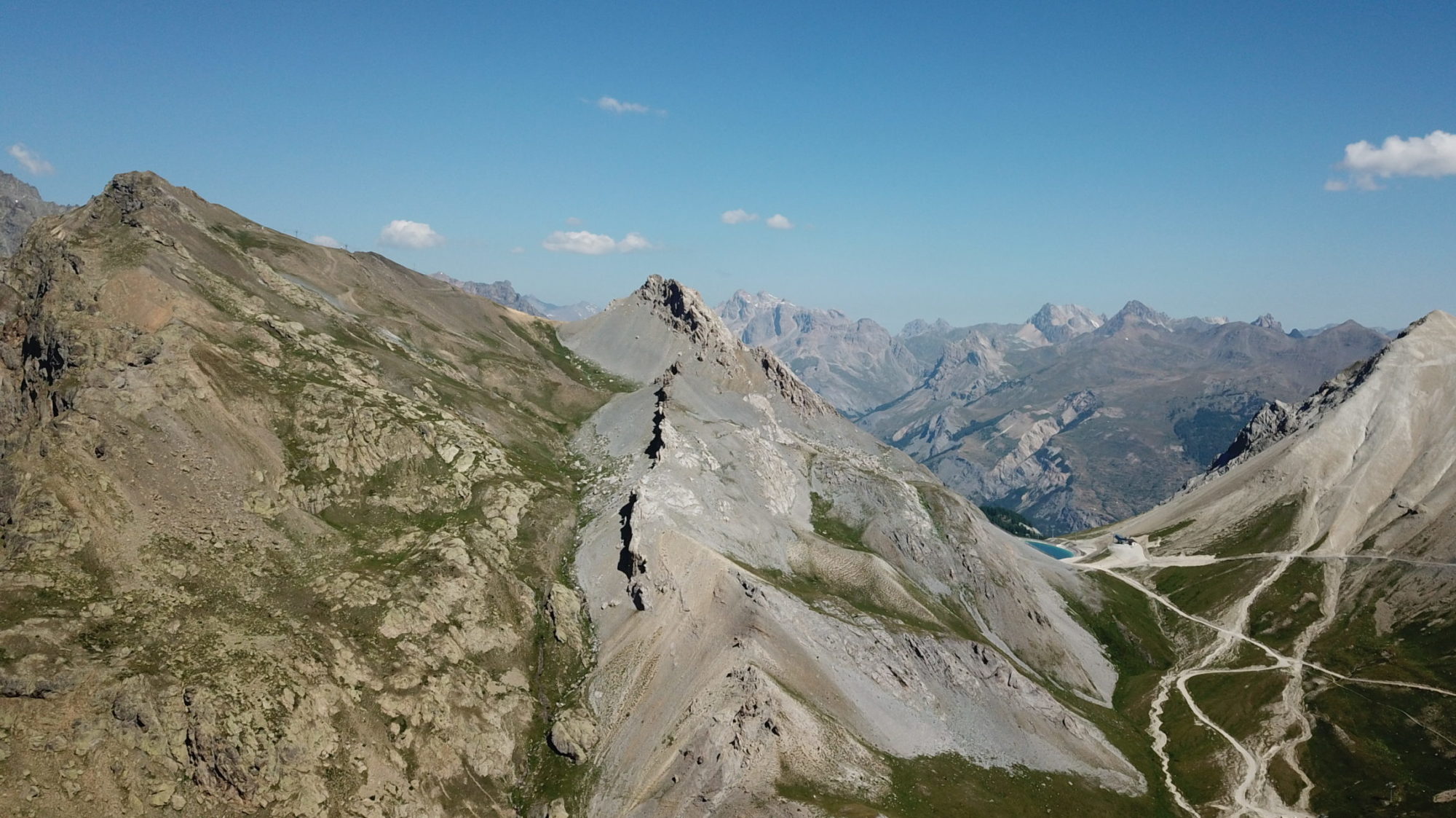
Were are pleased to confirm keynotes talks of:
Nicolas Bellahsen, ISTeP, Paris, France
Tectono-magmatic evolution of Central Afar Tectono-magmatic evolution of Central Afar
Mathilde Cannat, IPGP, France
Rift to Ridge : Insights from the study of present-day mid-ocean ridgesThe talk will use results from (mostly) recent surveys and modelling studies of present-day mid-ocean ridges and discuss their relevance to the study of Ocean Continent Transitions at divergent continental margins.
Rob Gawthorpe, University of Bergen, Norway
Sedimentary response to structural evolution of rifted margins I will present updated models for sedimentary response to the development of rift basins and rifted margins within a source-to-sink context.
Mohamed Gouiza, University of Leeds, UK
Continental extension in heterogeneous cratonic lithosphere, observations form the Labrador Sea Lithospheric extension, controlling the evolution of rifted margins, is governed by the interplay between the forces exerted on the plate boundaries and the rheological stratification of the lithosphere. The latter is a function of composition and thermal structure, which are strongly influenced by lithospheric inheritance. This relationship is well illustrated in the Labrador Sea, where rifting took place in cratonic lithosphere formed by the assembly of three distinct Precambrian tectonic units. Each unit exhibits distinct pre-rift lithospheric layering and thermal structure. Present-day observations from the Labrador Sea indicate that rifting and continental break-up resulted in a segmented margin with along-strike changes in rift evolution, crustal architecture, and timing and magmatic budget of continental breakup.
Christopher A. L. Jackson, Imperial College, UK
Born slippy: tectono-stratigraphic evolution of salt-influenced rifts In this talk I will look at how changes in the thickness and composition of pre- and syn-rift salt influences the tectono-stratigraphic development of rifts.
Nick J. Kusznir, University of Liverpool, UK
Investigating the architecture of OCTs with quantitative analysis To be updated
Laetitia Le Pourhiet, ISTeP, Paris, France
3D thermo-mechanical modeling of non-cylindrical rift systems All 3D models of break-up propagation show that obliquity causes delay in propagation of continental break-up. During these phases of delayed break-up that can last 10-30 Myr, the continental lithosphere continue to deform, to be structured and complexity increases. Results of this new generation of numerical models point out that 1/ the role of inheritance and mechanical heterogeneity might have been over-estimated by cylindrical models 2/ propagation rate of continental break-up recorded by the first anomalies could provide strong constrain on the global state of stress at the time of propagation..
Sylvie Leroy, ISTeP, Paris, France
Gulf of Aden Margins system: from magma-poor to magma-rich We will present the evolution of the structures of Gulf of Aden margins system from the east to the west related to the influence of the Afar plume. The thermal regime changes from east to west drive the modes of deformation and the final evolution of the conjugate margins.
Anders McCarthy, University of Bristol, UK
Rifted margins and subduction initiation To be updated.
Ken McDermott, ION Geo, UK
Magma-rich rifted margins and their 3D crustal architectures To be updated.
Geoffroy Mohn & Michael Nirrengarten, University of Cergy-Pontoise, France
Tectono-thermal record of lithospheric break-up: insights from IODP expedition in South China Sea To be updated.
Dietmar Müller, EarthByte Group, Australia
Coupling plate tectonic, mantle convection and surface process models Understanding the genesis of rift basin stratigraphy requires source-to-sink models of both syn-rift and post-rift sediments. The sediments found in rift basins and along passive margins may reflect distal mountain chains and/or the time-dependent tilting of continents. We couple a global plate tectonic model including both extensional and compressional deformation with a mantle convection model to model both tectonic and dynamic topography through time. The combined time-dependent topography is coupled with a surface process model to capture source-to-sink sediment transport and deposition, allowing us to explore the relative importance of a variety of parameters in model optimisation against stratigraphic observations, including climate/precipitation, erodibility, flexural plate thickness and alternative mantle convection models with different rheologies.
Gwenn Péron-Pinvidic NGU (NO) & Gianreto Manatschal, IPGS, Strasbourg, France
IMAGinING RIFTING: a retrospect We will present the main achievements of the first IMAGinING RIFTING workshop and to say some few words on the actions/projects that resulted from this meeting. In the presentation the main motivation/questions discussed during the last meeting will be presented and a short discussion of what has been achieve and what not will be provided.
Manuel Pubellier, CNRS-ENS-CGMW, Paris, France
Impact of the structural inheritance on the rifting Continental margins which have experienced diachronous scisor-shape stretching allow us to evaluate the impact of the structural configuration of the crust. The presentation makes use of some criterias of the Sundaland margin from Andama to the South China Sea to review some of these aspects such as the previous compressional structures or metamorphic fabric, the load of the sedimentary or magmatic material and the presence of older granitoids on the margin.
Jean-Claude Ringenbach, Total SA, France
Seismic IMAGinING of rifted margins, types and forcing parameters In the last ten years, the increasing amount of 2D and 3D seismic lines in the distal domains of rifted margins and proximal oceanic crust became game changers for the concepts developed on very few calibrated and field analogues. High resolution images of these domains will be shown and a typology of margins proposed. Forcing parameters, responsible for margin’s variability will be discussed.
Delphine Rouby, GET, University of Toulouse, France
Transform margins: a different point of view To be updated.
Daniel Stockli, UTA, Austin, USA
Temporal and thermal evolution of magma-poor rifted margins – Insights from geo- and thermochronometry of fossil rift margins The understanding of the geometric evolution of the rifted magma-poor margins and the progression from diffuse stretching to necking and hyperextension to mantle exhumation and magmatic break-up has evolved dramatically over the past two decades in light of studies of deep-continental margins, fossil rift margins, and numerical modeling. However, we have only an incomplete understanding and benchmarking of the thermal evolution of these margins during progressive rifting and the ramifications on crustal rheology, transitions from ductile thinning to discrete brittle attenuation, or the thermal history of syn-rift strata. Novel approaches in geochronology and high- and low-temperature thermochronometry are providing important new insights and constraints and allow for the differentiation between pre-rift tectonics, reconstruction of the thermal history of the thinned lower- and middle crust, the interplay between upper crustal exhumation and reheating, and the burial and hydrothermal history of syn-rift basins. This new constraints coupled with numerical models also provide important new insights into the overall lithospheric evolution during rifting.
Aurélien Virgone, Total R&D, Pau, France
Fluids evolution of rifting through the carbonate factory recorder. To be updated.
Kim J. K. Welford, Memorial University of Newfoundland, Canada
Characterizing the regional crustal architecture of the Orphan Basin/Flemish Cap rifted continental margins, offshore Newfoundland The northeast Newfoundland rifted continental margins represent one of the world’s most promising frontier regions for oil and gas exploration despite being lightly studied compared to the neighbouring southeast Newfoundland-Iberia conjugate margin pair, which arguably represents the most thoroughly studied magma-poor/non-volcanic pair in the world. The numerous studies of the Newfoundland-Iberia margins have provided the diagnostic characteristics thought to represent all magma-poor/non-volcanic margins. However, moving north, fundamental asymmetries begin to appear for the magma-poor/non-volcanic northeast Newfoundland-Atlantic Ireland conjugate margin pair in terms of magmatism, crustal hyper-extension, and mantle serpentinization. I will summarize the work being done at Memorial University on characterizing the Orphan Basin/Flemish Cap margins using seismic reflection, seismic refraction/wide-angle reflection, and potential field methods.
This provisional list of speakers and themes will be updated soon…

